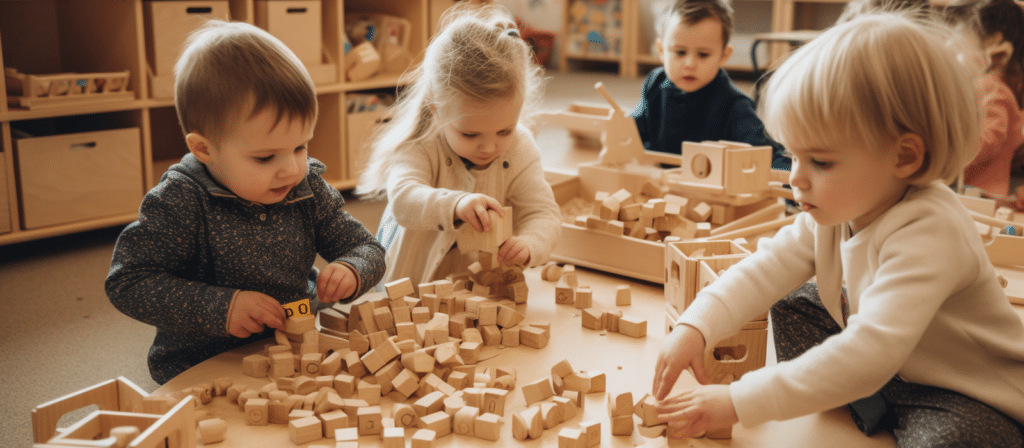The toddler phase, a period marked by ceaseless energy and curiosity, can pose considerable challenges, particularly for those tasked with their care. However, caregivers hold the key to empowering toddlers’ autonomy and promoting self-directed play and learning. This can be achieved through the creation of a supportive setting and the provision of suitable playthings that cater to the child’s interests. Regardless of whether you find yourself caring for toddlers in a group setting or within the confines of your own home, this approach remains effective.
Article Segment: The Playful Odyssey
Hailing from its origins as an orphanage in Budapest, the Pikler Institute has evolved into a global educational establishment for early childhood educators. This article will delve into two pivotal principles stemming from the Pikler methodology:
1.distinguishing between moments of child exploration and caregiving
2. establishing a secure environment replete with engaging playthings for toddlers.
Distinguishing Between Care and Discovery
Caregiving moments entail direct interactions with the child, encompassing activities like diaper changes, feeding, bathing, and dressing. These occasions offer a chance to engage purposefully with the child under your care. Amid the present landscape of social distancing, adept multitasking has become a norm. To maximize the quality of interaction during caregiving moments, it’s imperative to eliminate distractions and wholeheartedly focus on the child. Unplugging from electronics and maintaining eye contact while engaging in conversation are key. Devote your undivided attention to your child during these moments; they warrant nothing less.
Empowering Exploration
Exploration time grants the child the freedom to independently investigate, largely free from adult intervention. This phase serves as the child’s “work” period, where learning and exploration take center stage. For this to thrive, the child’s environment must ensure safety and be replete with captivating playthings, worthy of the child’s exploration.

Elevating Child Exploration to New Heights
Maximizing the benefits of child exploration requires attention to two crucial aspects:
Designing a secure space begins with ensuring optimal visibility. Additionally, this area must be devoid of any potential hazards—no choking threats, nothing toxic if ingested, and the like. Safety extends beyond playthings to encompass furniture and cabinets. Various childproofing devices available in stores, such as plastic outlet covers, magnetic cabinet locks, and cushioned corner guards, can bolster safety measures.
With the space prepared, adopt your child’s perspective to identify potential dangers. Kneeling down or lying on the floor as an infant would provide insights otherwise missed from an adult’s vantage point.
Make this area enticing and alluring for your child, kindling their desire to explore and play within it. Use descriptive language to pique their interest—an exclusive haven, perhaps a magical carpet.
Bear in mind that children may not remain confined to their magical realm for extended periods. They might engage for about 30 minutes before needing a breather. When this occurs, consider incorporating movement. Organize a house-wide scavenger hunt, a parade up the stairs, or a game of follow the leader. Conclude the activity by returning to their designated space—a win-win for all.

Dynamic vs. Engaging Playthings
Observing a young child’s profound fascination with a simple box stands in stark contrast to their fleeting attention toward more complex toys like Jack-in-the-boxes or automated message-bearing playthings. Active toys provide entertainment as the child passively watches, engrossing momentarily but soon losing appeal. Passive toys, in contrast, demand active manipulation by the child.
Passive playthings foster investigation, learning, and self-engagement. They tap into the child’s imagination, keeping them deeply involved. This immersion in play cultivates intellectual connections, as children engrossed with passive toys require no external entertainment.
Examples of passive playthings include:
- Books: Serving as more than reading material, books invite imaginative interactions, from caring for dolls to embarking on pretend journeys. Repeated perusal is common, laying foundations for imaginative play and storytelling.
- Toy Cars: These vehicles can navigate a child’s imaginative roads, racing or transporting dolls and stuffed animals. The speed variation on different surfaces sparks exploration.
- Blocks: Fueling creativity, blocks offer opportunities to construct structures, roads, and more. Their versatility extends to supporting imaginative play, acting as props or characters.
- Dolls: Providing companionship and a canvas for pretend scenarios, dolls serve as non-judgmental participants in a child’s exploratory narratives.
- Plastic Bowls: Beyond their utility, bowls fuel sorting, imaginative meals, balancing acts, and versatile accessories for play.
- Stuffed Animals: Offering solace through cuddles, these also inspire interactions with other playthings and role-playing.
Conclusion
While toddlers undoubtedly require substantial care and attention, meeting their needs goes beyond constant entertainment. Balancing caregiving with unstructured play and exploration is essential for wholesome development and learning. Careful environmental planning on your part is pivotal. As a result, you’ll transition from being the entertainer of a restless child to the observer of a content and independent little explorer during their playtime journey.













